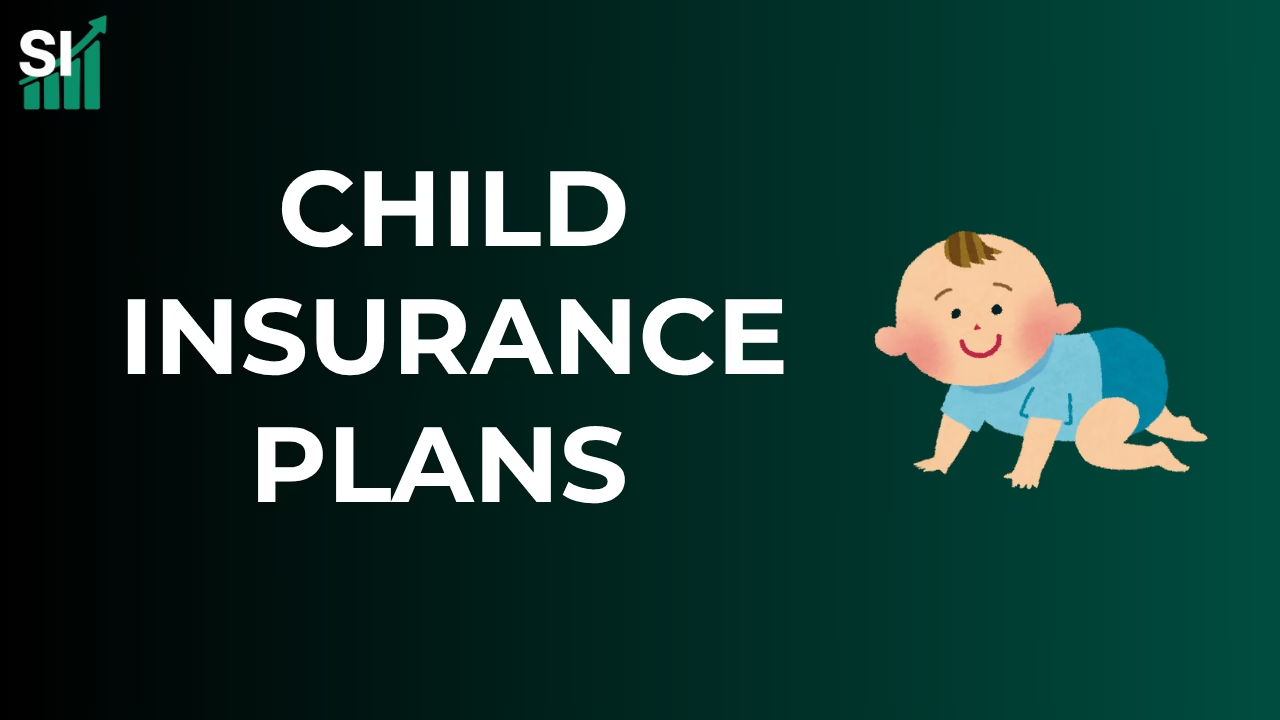Understanding Child Insurance Plans
Child insurance plans are specialized financial products designed to provide dual benefits: life insurance coverage for the parent and an investment component directed toward the child’s future needs. These plans serve as a safety net that ensures financial support in the unfortunate event of a parent’s demise while simultaneously accumulating funds to meet the child’s educational and developmental expenses.
At their core, child insurance plans operate on a simple premise. When a parent or guardian invests in such a plan, they pay regular premiums, part of which goes toward life insurance coverage, and the remainder is allocated into various investment vehicles. This structured approach allows the funds to grow over time, benefiting from compounding interest and market growth. Typically, the policy matures when the child reaches a certain age, usually around the time they require funds for higher education. This maturity benefit represents the accumulated value of the investment, providing a sizable amount for educational purposes.
Moreover, many child insurance plans also offer the option to choose riders or add-ons, such as critical illness coverage or accidental death benefits, thus enhancing the policy’s overall scope. This flexibility allows parents to tailor the plan according to their specific needs and circumstances. When selecting a suitable child insurance plan, it is essential to evaluate various factors, including the investment options available, the insurance coverage amount, and the potential returns. Notably, parents should consider these plans not just as an investment tool, but also as a means to secure their child’s financial future, ensuring they have adequate resources for educational pursuits and personal growth.
Topics of Discussion
The Pitfalls of Child Insurance Plans
Child insurance plans are often marketed as a dual-purpose financial product, offering both insurance coverage and a savings component for future expenses. However, there are significant drawbacks that potential investors should carefully consider before committing to such plans. One of the primary concerns is the lower returns associated with these plans. Unlike traditional investment vehicles, a considerable portion of the premium goes towards providing insurance coverage rather than being allocated for investment growth. This can significantly diminish the potential for wealth accumulation over time.
In addition to lower returns, child insurance plans typically come with higher costs compared to opting for separate insurance and investment products. Many parents may mistakenly believe that bundling these services into one plan is economical. However, the reality is that purchasing a standalone life insurance policy and investing in mutual funds or other alternatives could provide better coverage and higher returns, often at a lower total cost.
Another critical drawback is the lack of flexibility and liquidity associated with child insurance plans. These products often have stringent withdrawal conditions, making it difficult for policyholders to access their funds in times of need. This lack of liquidity can be particularly disadvantageous for families facing unexpected financial challenges or emergencies.
Moreover, child insurance plans generally offer limited fund options when compared to mutual funds, which can present a more extensive array of diversified investment choices tailored to varying risk appetites. As market conditions evolve, the inflexibility in fund selection may lead to stagnation in returns, particularly in inflationary environments. Inflation further decreases buying power, potentially eroding any potential growth associated with the plan. As a result, while child insurance plans may seem appealing, their numerous pitfalls warrant careful examination before investing.
Low Returns: The Cost of Combining Insurance and Investment
Child insurance plans are a popular choice among parents looking to secure their child’s financial future while providing protection through insurance. However, one notable aspect of these plans is the typically lower investment returns they offer. This phenomenon arises from the dual nature of these products, which combine insurance coverage with an investment component.
In a standard child insurance plan, a significant portion of the premiums paid by the policyholder is allocated toward the insurance aspect of the plan. This allocation leads to reduced funds available for investment, thereby limiting the potential for wealth accumulation over time. As the premiums cover various costs such as mortality charges and administrative fees, the actual amount directed towards accruing investment returns is often minimal. Consequently, families may find that their long-term financial goals, such as funding their child’s education, are compromised due to insufficient growth of the invested capital.
Moreover, child insurance plans tend to offer more conservative investment options, which prioritize capital protection over higher yields. While this conservative approach reduces the risk of substantial losses, it simultaneously caps the growth potential of the invested money. As investment performance is a crucial factor in achieving significant savings for future expenses, lower returns can hinder the ability to reach desired financial milestones and increase the total amount saved for educational needs.
Additionally, families often overlook the importance of alternative investment avenues that might provide better returns over the same time horizon. By comparing child insurance plans with standalone investment strategies, parents may discover options that align more closely with their financial objectives. Overall, while child insurance plans serve a dual purpose, the compromise on investment returns should be carefully evaluated against the broader financial picture when determining if such plans are the appropriate choice for one’s family.
Also Read:
Section 80C Investments: ELSS, PPF, and Tax-Saving Fixed Deposits : A Comprehensive Comparison
Section 80C investments - Compare ELSS, PPF, and tax-saving FDs in 2025. Understand returns, risks, and tax savings to choose the best option for you.
Read More →Section 80D Practical Explanation : Health Insurance Tax Benefits in 2025
Claim tax benefits on health insurance under Section 80D in 2025. Learn deduction limits, eligibility, and smart tips for financial security.
Read More →Higher Costs: Understanding the Financial Trade-offs
When evaluating child insurance plans, one of the most critical factors to consider is the overall cost. These plans typically combine both life insurance and an investment component, which can lead to higher expenses compared to purchasing a term plan and investing the difference separately. Given the complexity of these products, families may find it beneficial to analyze the financial implications before making a decision.
Child insurance plans often come with various fees, including administrative charges, premium allocation, and mortality charges, which can substantially increase the overall premium paid by the policyholder. When contrasted with a standard term insurance plan, which provides basic life coverage at a significantly lower cost, it becomes evident that opting for a child insurance plan might not be the most cost-effective choice. Term plans generally offer lower premiums, allowing families to redirect the savings into investments that could yield higher returns over time.
Add to this the fact that the investment returns associated with child insurance plans are often lower than market returns, which can be realized through more straightforward investment options such as mutual funds or stocks. These lower returns can offset the benefits gained from the insurance coverage, highlighting the importance of comprehension about long-term costs.
Furthermore, as investment components within child insurance plans can be subject to market fluctuations, families might encounter unpredictable growth of their invested capital. This unpredictability contrasts with the stable, albeit lower, growth one might expect from traditional investment avenues. Therefore, considering the combined costs of insurance and investment alongside potential returns can help families make more informed financial decisions.
Lack of Flexibility: The Constraints of Child Plans
Child insurance plans are designed with the intent to provide financial security for a child’s future needs, such as education and marriage. However, one of the significant drawbacks of these plans is their inherent lack of flexibility. Most child insurance plans impose long-term commitments, which can create challenges for policyholders who may need immediate access to funds. These commitments often include prolonged lock-in periods, where the invested premiums are not accessible for a specified duration.
During these lock-in periods, policyholders cannot withdraw their funds, which can be particularly concerning in times of financial need. For example, an unexpected medical emergency or sudden loss of income may necessitate immediate liquidity. Unfortunately, with child insurance plans, the invested money is tied up, limiting the ability to respond to urgent financial situations. Moreover, the penalties associated with early withdrawals can further compound these challenges, deterring policyholders from accessing their funds even when absolutely necessary.
Aside from the lack of access to funds, the issue of potential financial setbacks arises when unexpected situations occur. While policyholders may invest in child plans with the belief that they are safeguarding their child’s future, the reality is that emergencies can versus predetermined commitments. This discord between the inflexible nature of child plans and the dynamic nature of life can lead to significant stress and complications for families.
In addition, child insurance plans often come with specific terms and conditions that may not align with the policyholder’s evolving financial situation. This rigidity can discourage individuals from fully engaging with their insurance options. Ultimately, while planning for children’s futures is critical, the constraints of child insurance plans can inadvertently hinder financial agility, leading to a need for careful consideration before making such long-term commitments.
Investing Separately: Better Alternatives for Your Child’s Future
When considering the financial future of children, it is essential to distinguish between insurance needs and investment strategies. While child insurance plans provide essential coverage, they may not be the most effective vehicles for accumulating wealth over time. Therefore, exploring alternative investment avenues can lead to more significant financial growth for your child’s future.
One compelling alternative is term insurance, which offers life coverage at a lower premium compared to whole life insurance policies. Term insurance provides a sum assured that can safeguard your child’s financial needs should the worst happen. By opting for term insurance, families can allocate the savings generated from lower premiums into more robust investment options that may yield higher returns over the years.
In addition to term insurance, mutual funds present an attractive opportunity for wealth creation. These professionally managed investment funds pool money from various investors to create a diversified portfolio. Mutual funds cater to different risk appetites and investment horizons. By investing in equity mutual funds, for example, your investments can benefit from the potential of stock market growth, thereby maximizing returns over the long term.
Systematic Investment Plans (SIPs) are another effective strategy for securing your child’s financial future. SIPs allow you to invest a fixed amount regularly, promoting disciplined saving and enabling you to benefit from market volatility through rupee cost averaging. Over time, this consistent investment approach can lead to substantial savings, harnessing the power of compound interest.
In light of these considerations, separating investment from insurance needs not only clarifies financial priorities but also optimizes the wealth accumulation process for your child’s future. By utilizing term insurance, mutual funds, and SIPs effectively, parents can ensure that they are building a solid financial foundation that responds to their children’s evolving needs.
Also Read – 7 Shocking Insurance Myths in India You Must Stop Believing in 2025
Exploring Government-Backed Investment Schemes
Investing in a child’s future is a crucial decision for parents, and government-backed investment schemes offer reliable avenues to achieve this goal. One notable option is the Sukanya Samriddhi Yojana (SSY), specifically tailored for the education and marriage expenses of a girl child. This scheme provides an impressive interest rate, which is set by the government and is often higher than that of many traditional saving accounts. Contributions made to the SSY are eligible for tax deductions under Section 80C of the Income Tax Act, thereby encouraging parents to save diligently. Additionally, the scheme matures when the girl reaches 21 years of age, making it a viable choice for long-term savings aimed at critical life milestones.
Another option is the Public Provident Fund (PPF), which is widely appreciated for its security and tax benefits. The PPF account can be opened in the name of a child, and it offers a fixed interest rate, compounded annually. The government also guarantees returns, making the PPF a safe investment. Parents can contribute a minimum amount annually, benefiting from tax deductions under the same Section 80C. One of the unique advantages of the PPF is its 15-year maturity period, which allows the investment to grow steadily over time while also providing the flexibility to extend the tenure rather easily.
Both the SSY and PPF serve as attractive alternatives to traditional child insurance plans. While insurance plans may combine savings and coverage, they often involve higher premiums and limited returns on investment. In contrast, these government schemes focus primarily on encouraging savings while providing tax incentives, thus enhancing the overall financial literacy and future preparedness of parents. These features underscore the suitability of government-backed schemes in promoting a secure and financially viable future for children.
Determining the Right Strategy for Your Family
When considering child insurance plans, it is essential to evaluate your family’s financial goals and individual risk tolerance. Each family’s situation is unique, and understanding these parameters can significantly impact the decision to invest in such plans. For parents seeking to provide financial security for their children in the event of unforeseen circumstances, child insurance might be an appropriate strategy. These plans typically combine life insurance and investment elements, thereby ensuring your child’s future financial stability while also potentially accumulating savings over time.
However, child insurance plans might not always be the best option. For instance, families with a higher risk tolerance and those focused on aggressive wealth accumulation might find that investing in mutual funds or prioritizing term insurance serves their financial interests better. Term insurance offers coverage at a lower cost and can be complemented with investment vehicles like mutual funds, providing a more flexible and potentially higher return structure. This route allows for greater customization of financial priorities, enabling families to allocate funds based on their evolving needs.
To determine the most suitable approach, families should conduct an in-depth analysis of their financial landscape. This includes assessing current income, expenses, long-term aspirations, as well as liabilities. Conducting a thorough examination also involves understanding how much risk one is willing to take. A conservative investor may prefer a child insurance plan for guaranteed returns, while a balanced or aggressive investor may lean towards mutual funds, aiming for growth. It is advisable to engage with a financial advisor or conduct extensive research to align your financial choices with your family’s unique needs. This ensures that the strategy adopted is both beneficial and sustainable over the long haul.
Conclusion: Making Informed Financial Choices
In summary, the decision to invest in child insurance plans involves careful consideration of various factors that encompass both financial security and personal circumstances. Throughout the article, we discussed the multifaceted nature of child insurance, highlighting its dual purpose: providing a safety net for unforeseen events and serving as a disciplined savings mechanism for future educational or developmental needs.
It is essential for parents to evaluate their specific needs against the offerings of different child insurance policies. Key considerations should include the coverage amount, premium affordability, and potential returns on investment. Additionally, understanding the nuances of various insurance products, such as term plans, endowment policies, and unit-linked insurance plans, is crucial. Each of these options presents unique benefits and drawbacks, which should resonate with your long-term financial objectives.
Moreover, proactively assessing your financial situation enables you to discern which child insurance plan aligns best with your personal goals. Parents are encouraged to consider factors such as their current financial stability, anticipated future expenses, and the potential need for liquidity. Engaging with a financial advisor or conducting thorough research can further aid in navigating the complexities of child insurance and investments.
Ultimately, the key to making informed choices lies in understanding the importance of child insurance as part of a broader financial strategy. By prioritizing informed decision-making and aligning insurance investments with future aspirations for your children, you lay a solid foundation for their financial security and overall well-being. Careful planning not only helps mitigate risks but also enhances the ability to provide the necessary resources for a fruitful future. Parents who take these steps will be better equipped to safeguard their children’s financial future.
Further Reading
Life Insurance vs Term Insurance: 7 Practical & Trustworthy Differences
Compare life insurance vs term insurance in 2025. Learn 7 key differences in cost, coverage, and benefits to pick the right policy for you.
Read More →7 Powerful Reasons Claim Settlement Ratio Matters in Insurance (2025 Guide)
Learn 7 reasons why claim settlement ratio matters in 2025. Choose insurers wisely and secure peace of mind for your family’s future.
Read More →”Read
- 7 Shocking Insurance Myths in India You Must Stop Believing in 2025
- Life Insurance Premiums in 2025 : Important Factors that Decide and How to Calculate it.
- The Importance of Critical Illness Insurance: Protecting Your Financial Future
- ULIP vs Mutual Funds: 7 Vital Differences Every Investor Must Know in 2025
- Insurance Riders Explained: 7 Practical Benefits and Risks in 2025





